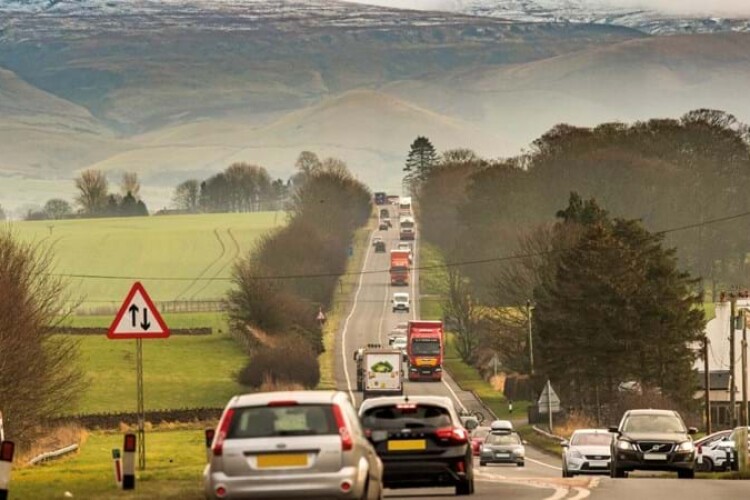On 20th June 2024 the Supreme Court ruled that Surrey County Council had breached planning law in approving an application by Horse Hill Developments for oil extraction near Horley because it had failed to consider the wider environmental implications.
Local resident Sarah Finch, on behalf of the Weald Action Group, argued that the council’s environmental impact assessment should have included the impact of burning the fuel after its extraction, and not just the extraction process itself.
In a split 3-2 decision, the Supreme Court agreed with her.
Friends of the Earth lawyer Katie de Kauwe said: “This historic ruling is a watershed moment in the fight to stop further fossil fuel extraction projects in the UK and make the emissions cuts needed to meet crucial climate targets. It is a huge boost to everyone involved in resisting fossil fuel projects."
However, others say that the ruling is likely to impact far more than just oil and coal extraction. Without swift parliamentary intervention, the implications for road building, airport expansions and other major infrastructure projects could be "equally compelling". Even house-builders will now have to rethink their planning applications, it is being suggested, to take in the lifetime carbon footprint of residents within the properties.
The legislation at issue in this case is the Town and Country Planning (Environmental Impact Assessment) Regulations 2017, which implemented European Union Directive 92/11/EU (the EIA directive) in the UK. This requires an EIA to identify, describe and assess the likely “direct and indirect significant effects” of the project on the environment, including (among other factors) the impact on climate (for example, the nature and magnitude of greenhouse gas emissions). The process of assessment must include public consultation. The legislation does not prevent the planning authority from giving consent for a project that is likely to cause significant harm to the environment; but it requires the authority to reach a reasoned conclusion on the environmental impact and to take this conclusion into account in making its decision.
Last week’s Supreme Court ruling sets down that the EIA directive does not impose any geographical limit on the scope of the environmental effects of a project that must be assessed. Surrey County Council was therefore wrong to confine the EIA in this case to emissions expected to occur at the project site.
This is exactly the principle on which environmental campaigner Dr Andrew Boswell has taken the UK government to court over the upgrade of the A47 in Norfolk. His claim that cumulative carbon emissions should have been assessed was rejected by the High Court and the Appeal Court. UK Supreme Court recently refused permission for a full supreme court hearing. The Surrey County Council ruling appears to overrule the previous Norfolk rulings.
Dr Boswell said: “This judgment is huge but it is only a vital first step in strengthening the law so that large planning decisions involving climate impacts are fully evidenced and science-based. Now companies must declare the full climate impacts of their projects, and ministers and planning committees must start to honestly assess them. It is an important signal to fossil fuel extractors, polluting industries and road developers that they can no longer get away with underplaying how much they are destabilising the climate system. If the next government is serious about climate change, it must work on strengthening the law to close all such loopholes.”
Lawyer David Harries, head of planning at Cheshire law firm Aaron & Partners, said: “By a 3:2 majority the Supreme Court has ruled that when carrying out an Environmental Impact Assessment (EIA), in this case for a proposed oil drilling, the 'downstream' impacts have to be considered in that assessment. The Supreme Court say that for an oil drilling, that has to include what is going to be done with the oil.
“It was agreed that much of it would be burned, so the climate impacts of that use needed to have been considered at the application stage.
“As this hadn't been done the consent for the drilling was quashed, and a new broader EIA will have to be carried out before the decision can sensibly be revisited.

“The decision is remarkable for several reasons. First, it seemingly trespasses on parliament's territory; oil consumption is lawful and this decision will do nothing to affect or limit that consumption, save that it will mean that some of the oil we use will have to travel further to get here. Restrictions on the use made of oil may indeed be necessary for combatting climate change, but that is surely a matter of policy for the legislature.
“Secondly, it is a massive extension of the ambit of EIA, and whilst climate campaigners will be celebrating, it will apply in any EIA (i.e. any substantial) development and no doubt provide very fertile ground for future argument before the courts as to what is and is not a 'downstream' effect, how that is to be measured and so on.
“In his lead judgment Lord Leggatt said that oil was unique, and that this decision will not open these floodgates, but his discussion of this in the judgment itself shows that this is contentious.
“The fact that in dissenting Lord Sales took the opposite view underlines this. The reasoning would clearly apply to other fossil extraction such as coal, but it will apply with equally compelling force to new road and airport projects.
“Logically, house-builders are, for example, now going to have to consider the climate impacts not just of building houses but also of the occupation of the houses they are building – and assess what they are.
“How much carbon is dwelling in a house going to contribute, between heating, lighting, repairs, acquisition of gadgets, use of cars and other transport?
"Thirdly, it was a 3:2 decision following a 2:1 decision the other way in the court of appeal. Such a split is always unsatisfactory. In this case four lords of appeal agree with the decision and four disagree (and even then for different reasons), hardly a message of clarity on such an important matter.
“Lord Sales gave a powerfully dissenting judgment in the Supreme Court, one that we suspect will eventually prevail, though it is going to take parliament to legislate for it to do so. In words which will come to be quoted often, and which he himself borrowed from a decision of the Irish Supreme Court, this 'open ended interpretation of article 3(1) would mean that there were 'hardly any limits but the sky' when it comes to needing to consider downstream effects.
“This comes at an inconvenient time for our incoming government; no major party wants to be seen to be anti-environment or pro-oil, but all are pro-growth and indeed their plans depend upon growth. This decision is firmly anti-growth; it will add complexity, cost, uncertainty and delay to any major project. Watch this space.”
UK Oil & Gas (UKOG), parent company of Horse Hill Developments, said that it now plans to work with Surrey County Council to either amend its original 2018 planning application's EIA or submit a new retrospective planning submission.
UKOG chief executive Stephen Sanderson described the Supreme Court judgment as a “rather perplexing retrospective ruling, which is counter to all prior judgements”.
Got a story? Email news@theconstructionindex.co.uk



